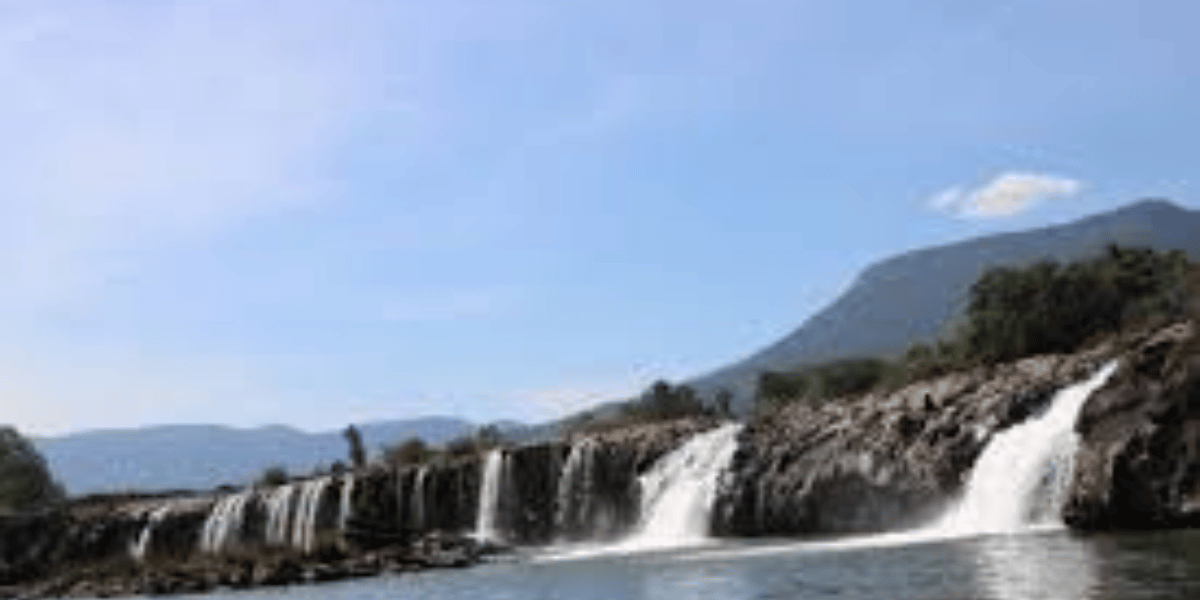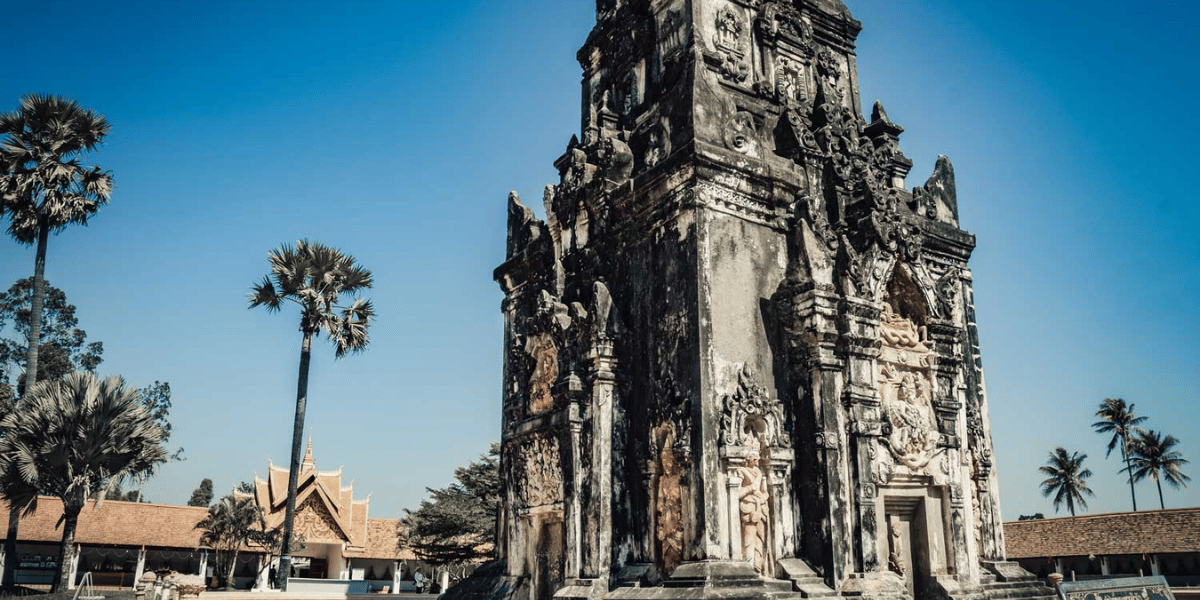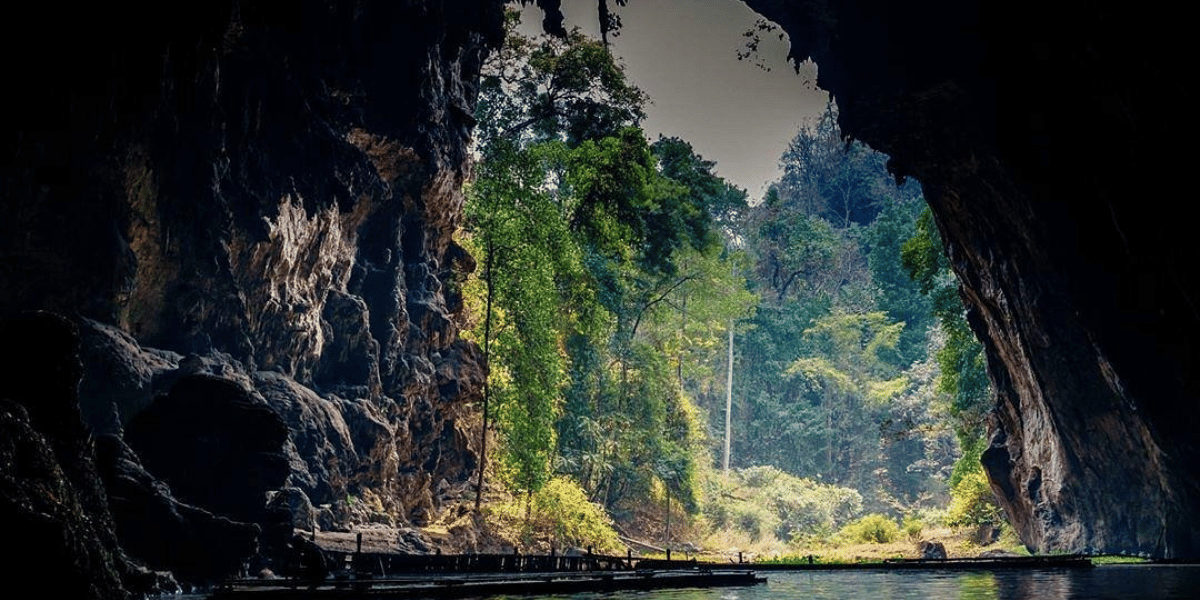Top Tourist Destinations in Sekong, Laos
Last Updated on 13 October, 2024 by admin
Sekong, a mountainous province in southern Laos, shares borders with both Vietnam and Cambodia, making it a unique gateway between these countries. This remote region is renowned for its untouched natural beauty, featuring breathtaking waterfalls, the serene Sekong River, and vast stretches of pristine forests. The province’s rugged landscape, dominated by dense jungles and picturesque rivers, offers a perfect escape for nature lovers and adventurers seeking to explore Laos’ lesser-known gems.
In Sekong, visitors can embark on a journey through stunning natural landscapes, encountering majestic waterfalls and vast forests, while also experiencing the rich and diverse cultures of the province’s many ethnic minorities. It is a place where you can immerse yourself in the tranquil beauty of nature, discover the unique traditions of local hill tribes, and unwind in a peaceful, serene environment far removed from the hustle and bustle of modern life.
Top Attractions in Sekong
Sekong is a province of natural beauty and rich cultural heritage. Below are some of the most captivating destinations that showcase the region’s diversity in both nature and culture. Whether you’re seeking adventure or a peaceful retreat, Sekong offers a range of experiences.
Tad Katamtok Waterfall
Tad Katamtok is one of the most magnificent waterfalls in Laos, with a dramatic drop of over 100 metres, cascading from the mighty Bolaven Plateau. The sheer size and power of the waterfall make it an unforgettable sight, surrounded by lush forest that provides a perfect backdrop for exploration.
- Activities: Admire the waterfall’s grandeur, swim in the natural pools, and trek through the surrounding forest to discover hidden views and wildlife.

My visit to Tad Katamtok was awe-inspiring. The thunderous sound of the water crashing down into the valley below was both humbling and mesmerising. I trekked through the jungle trails to find different vantage points, which provided spectacular views of the waterfall from above and below. The trek was a bit challenging, but the reward of standing in the mist of such a powerful natural wonder made it all worthwhile.
Tad Faek Waterfall
Though smaller in scale, Tad Faek Waterfall is no less charming. This scenic waterfall is surrounded by tranquil forests and has clear, calm pools at its base that are ideal for swimming and relaxation. It’s the perfect spot for a peaceful picnic or a refreshing swim in its cool, emerald waters.
- Activities: Swim in the natural pool, enjoy a picnic by the waterfall, and relax in the peaceful surroundings.

The calm and serene atmosphere at Tad Faek made it one of my favourite stops in Sekong. Unlike the larger, more dramatic waterfalls, Tad Faek felt like a hidden oasis where I could truly unwind. I spent the afternoon swimming in the clear waters and lounging on the rocks, soaking up the beauty of the surrounding nature. It was the perfect escape from the heat and a tranquil way to connect with nature.
Bolaven Plateau
The vast Bolaven Plateau is one of the highlights of southern Laos, stretching across several provinces, including Sekong. Known for its cool climate, tea and coffee plantations, and verdant landscapes, the plateau is a great destination for nature lovers and those interested in Laos’ agricultural heritage. You’ll find breathtaking viewpoints, stunning waterfalls, and remote villages where traditional life carries on undisturbed.
- Activities: Explore the vast landscapes, visit tea and coffee plantations, learn about the ethnic minority cultures, and trek through the forests to discover hidden waterfalls.
Exploring the Bolaven Plateau was one of the most enriching parts of my journey. Visiting the coffee plantations was fascinating, as I learned about the coffee-growing process and tasted some of the freshest brews I’ve ever had. The cool, fresh air and wide-open landscapes were a welcome change from the dense jungle below, and hiking through the plantations and nearby forests gave me a glimpse into the daily lives of the local ethnic groups like the Alak and Laven people.
Sekong River
The Sekong River runs through the province, providing a scenic and peaceful backdrop for boat trips and riverside exploration. The river is a lifeline for the local communities, and a boat ride along its tranquil waters offers stunning views of the lush greenery and hills that border the riverbanks.
- Activities: Take a boat tour to explore the river, fish with local guides, or visit the riverside villages to experience daily life along the river.

Cruising down the Sekong River was a highlight of my time in the province. The gentle sway of the boat and the sounds of the river flowing were incredibly relaxing. Along the way, we passed by small villages where children waved from the shore, and fishermen cast their nets into the water. The river provided a different perspective on Sekong’s natural beauty and the important role it plays in local life.
Ethnic Villages
Sekong is home to several ethnic minority groups, including the Laven, Alak, and Katang. These groups maintain their distinct languages, customs, and traditional practices, which can be experienced first-hand by visiting their villages. From the architectural styles of their houses to their unique craftsmanship, visiting these villages offers a rare insight into the rich cultural diversity of the region.
- Activities: Visit ethnic villages to learn about traditional crafts, try local dishes, buy handmade textiles, and engage with the community.
One of the most rewarding aspects of my trip was visiting the Laven village. The people were incredibly welcoming, and I had the chance to watch traditional weaving techniques passed down through generations. I also tasted bamboo sticky rice, a local delicacy cooked in bamboo tubes over an open fire. Spending time with the villagers offered a deeper understanding of their way of life and their connection to the land.
Xe Pian National Protected Area
The Xe Pian National Protected Area is a haven for biodiversity, protecting numerous endangered species and lush tropical rainforests. It is one of the most important conservation areas in Laos, known for its rich wildlife, including gibbons, elephants, and rare bird species. For nature lovers and adventure seekers, the park offers trekking opportunities and wildlife tours, allowing visitors to explore its untamed beauty.
- Activities: Trek through the jungle, observe wildlife in its natural habitat, and learn about conservation efforts.
Trekking through the Xe Pian forest was an exhilarating experience. Our guide pointed out various wildlife, including colourful birds and signs of elephant activity, though we weren’t lucky enough to spot one. The dense, vibrant jungle felt like a world away from modern life, and the knowledge that this area plays a crucial role in wildlife conservation added a deeper significance to the adventure.
Sekong is an ideal destination for those looking to experience the wild beauty of southern Laos. Whether marvelling at the power of Tad Katamtok Waterfall, enjoying the tranquillity of the Sekong River, or engaging with the rich cultural heritage of the region’s ethnic minorities, Sekong offers a unique blend of adventure and relaxation. With its stunning landscapes and diverse attractions, this province promises a memorable and enriching travel experience for all who venture here.
Travel Tips for Visiting Sekong
Planning your trip to Sekong is essential to make the most of your experience, whether you’re exploring its natural beauty or diving into the local culture. Below are some useful tips to help you prepare for a smooth and enjoyable visit to this captivating province.
Visa Requirements
For most visitors, getting a visa for Laos is a straightforward process. You can obtain a visa-on-arrival at most international airports and border crossings, including Pakse and Vientiane. Alternatively, you can apply for an e-visa online before your trip, which allows for a more convenient entry. Both options usually permit stays of up to 30 days. Ensure your passport has at least six months of validity, and carry passport-sized photos and the visa fee (usually in US dollars). It’s recommended to check the specific visa requirements for your nationality in advance to avoid complications.
Transportation Options
Although Sekong is a remote province, you can reach it through several means:
- By Air: The nearest airport is in Pakse, which is serviced by domestic flights from Vientiane. From Pakse, you can take a taxi or minivan for the 2-3 hour journey to Sekong. This is the fastest and most convenient route for those short on time.
- By Bus: For a more budget-friendly option, buses or minivans run from cities like Pakse and Savannakhet to Sekong. While the journey might be long and the roads can be challenging, the scenic views of the lush Lao countryside make it a rewarding experience. Be sure to confirm bus schedules in advance, as routes to Sekong may be infrequent.
Best Time to Visit
The ideal time to visit Sekong is during the dry season, from November to February, when the weather is pleasant and cool. With daytime temperatures ranging from 20°C to 30°C, this season is perfect for outdoor activities like trekking, visiting waterfalls, and exploring the ethnic villages.
During the rainy season, from May to October, Sekong becomes lush and green, but heavy rainfall can make travel difficult, particularly on the province’s less-developed roads. However, the waterfalls are at their most powerful during this time, making it a good option for those who want to see them in their full glory.
Local Cuisine
Sekong offers a variety of traditional Lao dishes with influences from the local ethnic communities. Some must-try foods include:
- Lao Laap: A flavourful minced meat salad mixed with fresh herbs, lime juice, and toasted rice powder, typically served with sticky rice.
- Or Lam: A hearty stew made with a variety of local vegetables, herbs, and sometimes wild game, reflecting the province’s abundant natural resources.
- Sticky Rice: A staple in Lao cuisine, often eaten with grilled meats and spicy dipping sauces like jeow.
While exploring Sekong, don’t miss out on trying traditional foods prepared by local ethnic groups, such as bamboo-cooked sticky rice and wild vegetable dishes, which showcase the region’s culinary diversity.
Accommodation Options
Sekong offers a range of accommodation choices to suit different types of travellers:
- Hotels and Guesthouses: There are several modest but comfortable hotels and guesthouses in Sekong town. These options are affordable and provide basic amenities, making them a convenient base for exploring the surrounding areas.
- Homestays: For a more immersive experience, staying in a homestay in one of the ethnic villages is highly recommended. This option gives you the opportunity to engage with local families, learn about their customs and traditions, and experience their day-to-day life up close.
No matter where you stay, the warmth and hospitality of the Lao people will ensure that your time in Sekong is both memorable and enriching.
Cultural Etiquette and Local Customs
When visiting Sekong, it’s important to respect local customs and traditions. Here are a few cultural tips to keep in mind:
- Dress Modestly: Lao culture places a high value on modesty, so it’s important to dress appropriately, especially when visiting temples or ethnic villages. Wearing clothes that cover your shoulders and knees is recommended.
- Greetings: The traditional Lao greeting is the “nop”, a gesture where you press your palms together in front of your chest and offer a slight bow. This is a respectful way to greet locals, especially elders.
- Respecting Buddhist Traditions: When visiting temples, always remove your shoes before entering and avoid pointing your feet towards Buddha statues. It’s also polite to ask for permission before taking photos, especially of monks or local people.
By preparing properly and respecting the local customs, you can ensure a respectful and meaningful visit to Sekong, enhancing your experience of this tranquil province.
Conclusion
Sekong is a hidden gem in southern Laos, offering a perfect blend of untouched nature, rich cultural heritage, and serene tranquillity. From the majestic Tad Katamtok Waterfall to the vibrant Sekong River and the ethnic diversity of its local villages, this province is an ideal destination for those who seek adventure, cultural exploration, and peaceful escapes. Whether you’re trekking through the lush forests of the Bolaven Plateau, cruising along the river, or engaging with the traditional lifestyles of the ethnic minority groups, Sekong promises unforgettable experiences.
For travellers looking to connect with nature and immerse themselves in authentic Lao culture, Sekong offers a rare opportunity to step off the beaten path and discover a region filled with natural beauty and cultural treasures. We encourage visitors to explore this peaceful corner of Laos and create memories that will last a lifetime.




